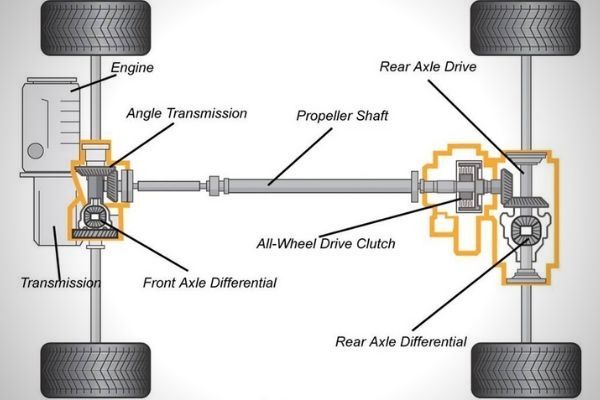What Does Utility 4x2 4 Door Mean

Let's break down what the term "Utility 4x2 4 Door" signifies when describing a vehicle. It's a shorthand notation that communicates several key aspects of the vehicle's design and capabilities. Understanding this description helps with various tasks, from general maintenance and troubleshooting to researching potential modifications and understanding the vehicle's limitations. It’s like deciphering a quick summary of the car’s core attributes, which is invaluable whether you're tackling a repair or just trying to understand your vehicle better.
Purpose: Deciphering the Vehicle's DNA
Understanding "Utility 4x2 4 Door" is crucial for several reasons:
Repairs and Maintenance: Knowing the drivetrain (4x2) and body style (4 Door) directly impacts which parts are compatible and which repair procedures apply. For example, a 4x2 vehicle will have a significantly simpler drivetrain than a 4x4, affecting everything from differential fluid changes to suspension repairs.
Modifications: If you're planning modifications, particularly related to off-roading, suspension, or body work, understanding these characteristics is essential. A 4x2 drivetrain limits off-road capabilities compared to a 4x4.
Parts Compatibility: When sourcing replacement parts, these descriptors help narrow down the search to components specifically designed for your vehicle's configuration.
Understanding Limitations: Knowing you have a 4x2 drivetrain, for instance, helps you realistically assess the vehicle's performance capabilities in various conditions.
Key Specs and Main Parts: The Building Blocks
Let's dissect each element of "Utility 4x2 4 Door":
"Utility"
The "Utility" designation generally implies a vehicle designed with practicality and versatility in mind. This often translates to features like a cargo bed (as in a pickup truck), a spacious interior, or a robust suspension system built for carrying loads. The key here is practicality over pure performance or luxury. It suggests the vehicle prioritizes function and work-related tasks.
"4x2"
This refers to the vehicle's drivetrain configuration. It indicates that the vehicle has two-wheel drive. The first number, "4", technically signifies that there are four wheel positions, regardless of which are driven. The second number, "2", indicates that only two of those wheel positions receive power from the engine.
In a 4x2 vehicle, power is typically sent to either the rear wheels (rear-wheel drive, or RWD) or the front wheels (front-wheel drive, or FWD). RWD is more common in trucks and some SUVs, while FWD is more prevalent in passenger cars and some smaller SUVs. The main components involved in the 4x2 drivetrain are:
- Engine: The source of power.
- Transmission: Modifies engine speed and torque to drive the wheels.
- Driveshaft (RWD): Transmits power from the transmission to the rear differential.
- Differential: Allows wheels on the same axle to rotate at different speeds during turns.
- Axles: Transfer power from the differential to the wheels.
A 4x2 drivetrain is simpler and generally more fuel-efficient than a 4x4 (four-wheel drive) system because it has fewer moving parts and less weight.
"4 Door"
This is straightforward: it simply means the vehicle has four doors for passenger access. This is important for understanding the body style and interior layout. 4-door vehicles usually accommodate 4-5 passengers.
How It Works: Power Flow
The fundamental principle is that the engine generates power, which is then managed and distributed by the transmission. In a 4x2 RWD vehicle (common for a utility truck), the transmission sends power to the rear wheels via the driveshaft and differential. In a 4x2 FWD vehicle, the transmission is integrated with the differential in a single unit called a transaxle, which then directly drives the front wheels via axles.
Simplified Power Flow (4x2 RWD): Engine -> Transmission -> Driveshaft -> Rear Differential -> Rear Axles -> Rear Wheels.
Simplified Power Flow (4x2 FWD): Engine -> Transmission/Transaxle -> Front Axles -> Front Wheels.
Real-World Use: Basic Troubleshooting
Knowing you have a 4x2 vehicle can help with troubleshooting. For example:
- Tire Wear: Uneven tire wear can indicate alignment issues, suspension problems, or differential issues. Observing *which* tires are wearing unevenly (front or rear) can help isolate the problem.
- Drivetrain Noise: Unusual noises like whining or clunking from the rear (RWD) could point to a problem with the differential, driveshaft, or axle bearings. In a FWD, similar noises from the front could indicate transaxle or CV axle (constant-velocity joint) problems.
- Loss of Traction: In slippery conditions, a 4x2 vehicle will have significantly less traction than a 4x4. Understanding this limitation prevents over-confident driving in challenging situations. 4x2 vehicles often benefit from using winter tires in snowy or icy conditions to improve traction.
Example: You notice a loud grinding noise coming from the rear of your "Utility 4x2 4 Door" truck while driving. Knowing it's a 4x2 RWD, you would focus your initial investigation on the rear differential, driveshaft, and rear axles. Checking the differential fluid level and condition would be a good first step.
Safety: Identifying Risky Components
Certain components within the drivetrain are inherently risky to work on due to their weight, complexity, or the potential for stored energy:
- Transmission: Heavy and complex. Requires proper support during removal and installation. Improper handling can lead to serious injury.
- Driveshaft: Can store rotational energy. Always ensure the vehicle is properly supported before working near or removing the driveshaft.
- Differential: Contains gears and fluids that can be hot and potentially hazardous. Wear appropriate safety gear, including gloves and eye protection.
- Springs and Suspension Components: Coil springs and leaf springs store significant potential energy. Use spring compressors or other specialized tools to safely relieve tension before disassembly.
Important Note: If you are unsure about any repair procedure, it's always best to consult a qualified mechanic. Improper repairs can lead to vehicle damage, injury, or even death.
We have a detailed diagram of a generic 4x2 drivetrain system that can further assist with your understanding. This diagram illustrates the components, their connections, and the flow of power. It’s available for download.
